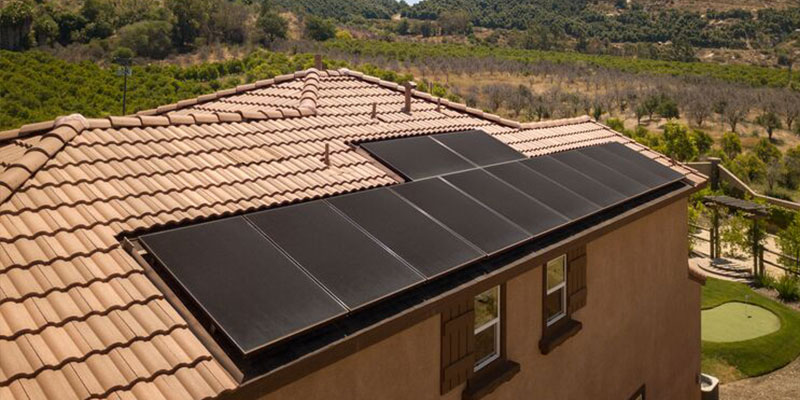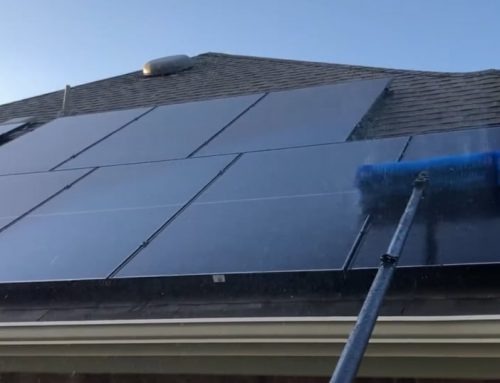Whether you’re thinking of making the switch to renewable energy, or you’re looking to get more from your existing system, it’s natural to want to drive the highest energy production and ROI possible.
As more and more South Australians embrace the idea of renewable energy, it’s essential to understand the various solar panel sizes and wattage options available.
To help you stay informed and enjoy the greatest return possible, we’ll level up your knowledge across:
- The most common solar panel sizes
- The most common solar wattage
- Why choosing the right site and wattage matters
- Factors to consider when choosing the size and wattage
Choosing the right solar panels is not just about saving money; it’s about maximising your energy generation potential and contributing to a greener future.
Let’s get right into it.
Solar Panel Size Spectrum
Solar panels come in a range of sizes, with the most common being 60-cell and 72-cell panels. These numbers correspond to the number of individual solar cells within each panel.
The 60-cell panels are generally more compact and suitable for smaller rooftops, while the 72-cell panels offer a larger surface area for capturing sunlight, making them ideal for larger installations.
When it comes to physical dimensions, 60-cell panels typically measure around 1 metre in width and 1.65 metres in length, whereas 72-cell panels are slightly longer, at approximately 1.99 metres.
The choice between these two sizes often depends on the available roof space and energy requirements of your household.
Wattage: A Key Factor
Wattage is a crucial factor to consider. It determines how much electricity a panel can generate under standard test conditions.
In Adelaide, the most common panels have wattage ratings ranging from 250 to 400 watts per panel.
The choice of wattage depends on your energy consumption and available roof space.
If you have limited roof space but still want to generate a significant amount of electricity, opting for higher-wattage panels can be a smart choice.
On the other hand, if you have ample roof space, you can consider a combination of standard wattage panels to achieve your desired energy output.
Why the Right Choice Matters
Selecting the right solar panel size and wattage is not just about ensuring your energy needs are met but also about maximising the return on your investment.
In Adelaide’s sunny climate, efficient panels can make a substantial difference in your energy savings and environmental impact.
Oversized panels may be inefficient, while undersized panels may not meet your energy requirements.
Furthermore, the Clean Energy Council (CEC) in Australia has established guidelines and standards for solar installations.
Choosing panels that meet or exceed these standards is vital to ensure safety, performance, and eligibility for government incentives and rebates.
Choosing the Right Solar Panel Size and Wattage
60-Cell Solar Panels (Standard Size)
They are the standard-sized panels commonly found in Adelaide. They strike a balance between efficiency and space requirements, making them suitable for most residential installations.
Benefits:
- Space-efficient, making them ideal for smaller rooftops.
- Cost-effective without compromising on performance.
- Complies with Clean Energy Council standards.
Suggestions:
- Consider 60-cell panels if you have limited roof space.
- Opt for higher wattage options within this category to maximise energy generation.
72-Cell Solar Panels (Larger Size)
They are larger and designed for more significant energy generation. They are an excellent choice if you have ample roof space and high energy consumption.
Benefits:
- Generates more electricity due to a larger surface area.
- Efficient for larger households or energy-intensive activities.
- Provides long-term cost savings.
Suggestions:
- Ensure your roof can accommodate the larger dimensions of these panels.
- Consider 72-cell panels if you have a spacious roof and want to maximise your renewable energy production.
Higher Wattage Panels
Solar panels with higher wattage ratings offer increased energy output per panel. This option is suitable for those who want to generate more electricity from a limited number of panels.
Benefits:
- Maximises energy production in limited roof space.
- Reduces installation costs by requiring fewer panels.
- Ideal for those with specific energy goals.
Suggestions:
- Assess your energy needs and roof space carefully before opting for higher-wattage panels.
- Consult with a professional to determine the most efficient wattage for your installation.
Standard Wattage Panels
Standard wattage panels typically range from 250 to 300 watts. They are a reliable choice for those who prioritise cost-effectiveness and moderate energy generation.
Benefits:
- Budget-friendly, making renewable energy more accessible.
- Ideal for small to medium-sized households.
- Complies with industry standards.
Suggestions:
- Choose standard wattage panels if you have a limited budget.
- Combine multiple panels to achieve your desired energy output.
Customised Combinations
For those with unique energy needs and ample roof space, creating a customised combination of solar panel sizes and wattages can be a strategic approach.
Benefits:
- Tailored to your specific energy goals.
- Maximises roof space utilisation.
- Allows for flexibility in design and energy production.
Suggestions:
- Work closely with an expert to design a customised solution.
- Consider factors like energy consumption patterns and future expansion.
Each of these options has its merits, and the choice ultimately depends on your circumstances and goals.
Consulting with a reputable solar installer in Adelaide is a crucial step to ensure your panel selection aligns perfectly with your needs.
Factors to Consider When Choosing the Right Solar Panel Size and Wattage
Energy Consumption and Goals
Start by assessing your average monthly electricity usage.
Are you looking to cover all your energy needs with renewable power, or do you want to offset a portion of your bill?
If you have high energy consumption, larger panels with higher wattage may be necessary to generate the required electricity.
Conversely, if your consumption is relatively low, standard wattage panels might suffice. Setting clear energy goals will help you determine the appropriate panel size and wattage combination.
Additionally, consider your long-term energy goals. Are you planning to expand your solar installation in the future, or is your current setup sufficient?
Available Roof Space
Your roof’s available space plays a significant role in your panel selection. Different panel sizes require varying amounts of roof space.
If you have a small or complex roof shape, opting for 60-cell panels might be the best choice, as they are more space-efficient.
On the other hand, if your roof offers ample room and is unobstructed by shade, larger 72-cell panels can capture more sunlight and generate higher yields.
Carefully measure your roof’s dimensions and shape to determine which panel size is a better fit.
Remember to account for any obstructions like vents, chimneys, or skylights that may limit your available roof space.
Solar installers can help you design a layout that maximises the use of your roof’s surface area, ensuring optimal energy production.
In Conclusion: Making Sense of Your Solar Options
Let’s recap the essential points:
- Solar Panel Sizes: Choose between standard 60-cell panels and larger 72-cell panels, considering your available roof space.
- Wattage Options: Decide between higher wattage panels for maximum energy production or standard wattage panels for cost-effectiveness.
- Custom Combinations: Explore the possibility of creating a customised mix of panel sizes and wattages for tailored energy solutions.
Now, as you contemplate which option suits you best, remember these crucial factors:
- Energy Consumption and Goals: Assess your monthly electricity usage and set clear energy goals for your solar installation.
- Available Roof Space: Measure your roof’s dimensions and account for any obstructions to determine the ideal panel size.
To make the most informed decision for your unique circumstances, don’t hesitate to consult with a reputable expert in Adelaide.
With the right panels, you’ll not only save on energy bills but also contribute to a brighter, more environmentally conscious future.
Ready to Shine Brighter? Contact Energy Buster Today!
If you’re ready to make the switch to renewable energy, Energy Buster is here to guide you every step of the way.
Our team of experts can provide personalised advice, assess your energy needs, and design a solution tailored to your unique circumstances. Whether you need a quote or just some friendly advice, we’re here to help.
Contact the team at Energy Buster today to claim your fast and FREE quote.






